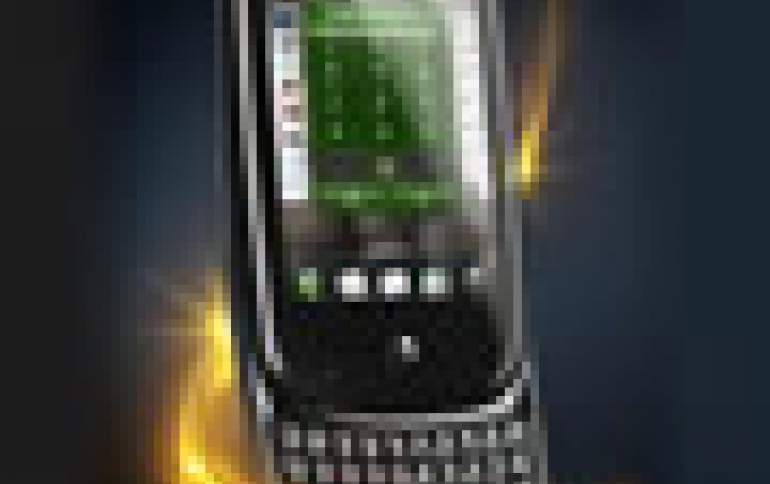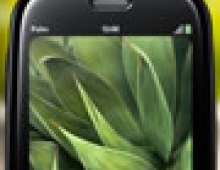
Palm Pre Aims at the iPhone, Costs $170 to make: iSuppli
Palm is aiming high with its new Pre, a smart phone that rival's Apple's iPhone in terms of slickness and in terms of hardware features according to a virtual teardown conducted by iSuppli.
Palm took the wraps off its Pre smartphone at CES ealrier this year. The a touch-screen device offers GPS, Wi-Fi and a slide out full keyboard. It will be available exclusively on the network Sprint Nextel in the first half of 2009.
Palm had been steadily losing market share to the iPhone, Research in Motion's BlackBerry and other devices.
The Palm Pre carries a combined total projected Bill-of-Materials (BOM), of $170.02 which includes hardware, manufacturing and software and IP licensing costs, according to an estimate from iSuppli. Since the Pre is not yet shipping, iSuppli has not conducted an actual physical teardown of the product. However, iSuppli has produced an estimate of the Pre's hardware and manufacturing costs based on Q2 component pricing and assembly rate from the company's Mobile Handset Cost Model to develop this cost analysis. An iSuppli cross-functional team also participated in developing the virtual teardown, including experts in memory, displays, baseband, component pricing, mobile handsets and wireless connectivity.
"The similarity in features between the Pre and the iPhone clearly reveals the mark Palm is trying to hit," said Tina Teng, senior analyst, wireless communications, for iSuppli.
From a user perspective, Palm seems to be right on target, combining a multi-touch display interface with an intuitive operating system that makes operation easier and more convenient to use, according to Teng. The Pre is the only announced smart phone besides the iPhone to support a multi-touch display interface, a feature that allows multiple simultaneous touch inputs.
"The use of a multi-touch screen - a key allure of the iPhone - and Palm's innovative webOS operating system, are likely to allow the pre to appeal to a broad range of consumers, going far beyond the company's core group of business-oriented customers," Teng said.
Outside of the user interface and software, the Pre's other features match up well with the iPhone 3G and the other lineup of 'iPhone killers' including the BlackBerry Storm. These features include 3G wireless broadband, an accelerometer, an ambient light sensor, a proximity sensor, large capacity memory for storage, Wi-Fi and a 3-megapixel camera.
iSuppli's total Pre cost estimate of $170.02 consists of a hardware cost of $137.83, including the battery, $9.58 for manufacturing and basic test costs and software & licensing cost of $22.61. iSuppli is projecting that Palm will try to sell the Palm Pre to Sprint at a price of about $300. However, as is the case with virtually all mobile phones, the Pre?s price to consumers will be lower, at about $200, due to the wireless operator?s subsidy.Software and licensing includes the cost of intellectual property, royalties and licensing fee. Not included in this analysis are shipping, logistics, marketing and other channel costs.
The combination of the display and touch screen module is expected to be the Pre's most expensive single subsystem, at $39.51, representing 23.2 percent of the device's BOM. iSuppli believes the Pre employs a 3.1-inch TFT-LCD screen that has a pixel format of 320 by 480 pixels and supports the display of 16 million colors. The display subsystem also likely includes a capacitive touch screen overlay that allows multi-touch input through software.
Other significant contributors to the Pre's cost include the 8GBytes of NAND flash memory for storage, accounting for $15.96, or 9.4 percent of the Pre's total BOM, the dual-band CDMA EVDO air interface, at a cost of $15.41, or 9.1 percent of the total BOM and the 3-megapixel camera, costing $12.39, or 7.3 percent of the BOM.
With the arrival of the iPhone and a range of competitive products, Palm in recent years has been suffering a decline in its already-minor share of global smart phone sales. Palm's share of global smart phone shipments declined to 2 percent in 2008, down from 2.9 percent in 2006, according to iSuppli.
"Palm has been known for years for its touch screen enabled PDA devices, its easy to use, simple operating system and its Treo smart phone product line," Teng observed. "However, just a glance at the Pre at CES has changed the industry's opinions about Palm, showing it is a company that can be competitive with Apple iPhone or any other leading-edge product in the global smart phone market."
Palm had been steadily losing market share to the iPhone, Research in Motion's BlackBerry and other devices.
The Palm Pre carries a combined total projected Bill-of-Materials (BOM), of $170.02 which includes hardware, manufacturing and software and IP licensing costs, according to an estimate from iSuppli. Since the Pre is not yet shipping, iSuppli has not conducted an actual physical teardown of the product. However, iSuppli has produced an estimate of the Pre's hardware and manufacturing costs based on Q2 component pricing and assembly rate from the company's Mobile Handset Cost Model to develop this cost analysis. An iSuppli cross-functional team also participated in developing the virtual teardown, including experts in memory, displays, baseband, component pricing, mobile handsets and wireless connectivity.
"The similarity in features between the Pre and the iPhone clearly reveals the mark Palm is trying to hit," said Tina Teng, senior analyst, wireless communications, for iSuppli.
From a user perspective, Palm seems to be right on target, combining a multi-touch display interface with an intuitive operating system that makes operation easier and more convenient to use, according to Teng. The Pre is the only announced smart phone besides the iPhone to support a multi-touch display interface, a feature that allows multiple simultaneous touch inputs.
"The use of a multi-touch screen - a key allure of the iPhone - and Palm's innovative webOS operating system, are likely to allow the pre to appeal to a broad range of consumers, going far beyond the company's core group of business-oriented customers," Teng said.
Outside of the user interface and software, the Pre's other features match up well with the iPhone 3G and the other lineup of 'iPhone killers' including the BlackBerry Storm. These features include 3G wireless broadband, an accelerometer, an ambient light sensor, a proximity sensor, large capacity memory for storage, Wi-Fi and a 3-megapixel camera.
iSuppli's total Pre cost estimate of $170.02 consists of a hardware cost of $137.83, including the battery, $9.58 for manufacturing and basic test costs and software & licensing cost of $22.61. iSuppli is projecting that Palm will try to sell the Palm Pre to Sprint at a price of about $300. However, as is the case with virtually all mobile phones, the Pre?s price to consumers will be lower, at about $200, due to the wireless operator?s subsidy.Software and licensing includes the cost of intellectual property, royalties and licensing fee. Not included in this analysis are shipping, logistics, marketing and other channel costs.
The combination of the display and touch screen module is expected to be the Pre's most expensive single subsystem, at $39.51, representing 23.2 percent of the device's BOM. iSuppli believes the Pre employs a 3.1-inch TFT-LCD screen that has a pixel format of 320 by 480 pixels and supports the display of 16 million colors. The display subsystem also likely includes a capacitive touch screen overlay that allows multi-touch input through software.
Other significant contributors to the Pre's cost include the 8GBytes of NAND flash memory for storage, accounting for $15.96, or 9.4 percent of the Pre's total BOM, the dual-band CDMA EVDO air interface, at a cost of $15.41, or 9.1 percent of the total BOM and the 3-megapixel camera, costing $12.39, or 7.3 percent of the BOM.
With the arrival of the iPhone and a range of competitive products, Palm in recent years has been suffering a decline in its already-minor share of global smart phone sales. Palm's share of global smart phone shipments declined to 2 percent in 2008, down from 2.9 percent in 2006, according to iSuppli.
"Palm has been known for years for its touch screen enabled PDA devices, its easy to use, simple operating system and its Treo smart phone product line," Teng observed. "However, just a glance at the Pre at CES has changed the industry's opinions about Palm, showing it is a company that can be competitive with Apple iPhone or any other leading-edge product in the global smart phone market."



















